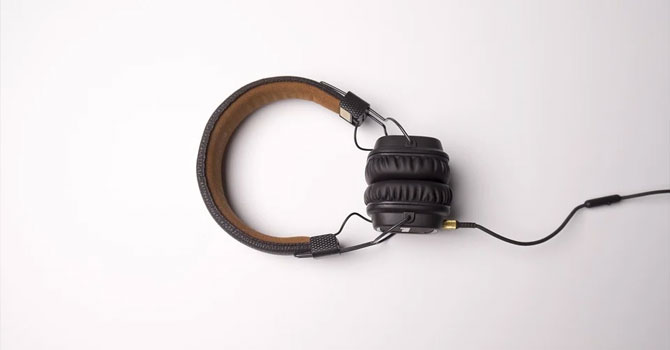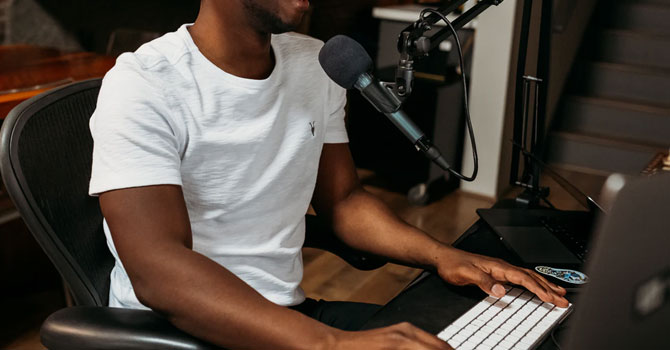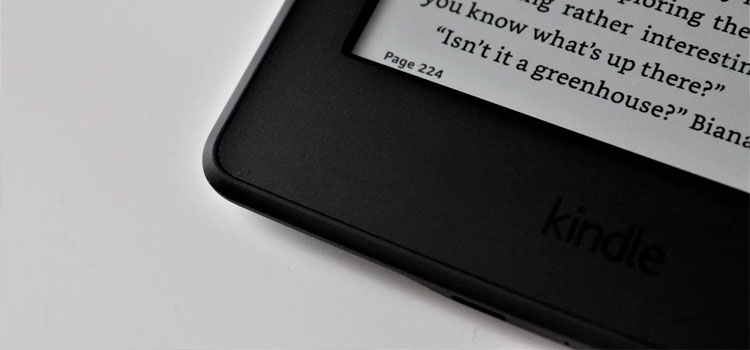You’ve probably subscribed to a few podcasts, or at least listened to a few.
If so, you’re far from alone.
Over 90 million Americans listen to a podcast once a month, and the numbers are projected to grow each year.
As the audience grows, and so does the number of podcasts available.
Should you add to these podcasts and publish your own?
In today’s blog post, you’ll learn all the reasons why starting a podcast is good for your business and your brand. You’ll also get a step-by-step guide on how to start a podcast.
Why Start A Podcast?
You might be wondering if starting a podcast is even worth it, especially if you have a small online business with not a lot of capital or cash on hand.
But these are some of the reasons why starting a podcast for your business is a good idea.
Podcasting can increase your traffic.
Podcasting gives you the opportunity to reach out to new audiences who might not be fond of reading blog posts or watching videos.
When listeners subscribe to your podcast, they may recommend your podcast to other listeners who may be interested in what you have to offer.
These are new listeners that can potentially become new customers of your business.
Podcasting strengthens your relationship with your existing audience.
Widening your reach is important, but keeping your customers and your existing audience is just as, if not more, important.
A monthly or weekly episode of your podcast keeps your subscribers updated and invested in your content and your business.
Podcasting is a great alternative to video marketing.
In terms of digital marketing, video marketing is superior. Videos are indeed the content of the future.
However, not everyone is comfortable being on camera, or have the skills or resources to create high-quality videos.
In this case, something is better than nothing; podcasts are better than having no digital marketing strategy.
Podcasting is simple to start.
You can order the equipment today, get them tomorrow, download the software, and you can start right away.
Podcasting is popular.
Podcasts are a welcome alternative to written and video content, mainly because listeners can engage with audio content while multitasking.
When reading articles or watching videos, you have to set aside time and attention to be involved in the content.
Podcasting gives you a chance to add to your revenue stream.
The main purpose of podcasting for your business is to promote your own products and services.
But as we’ve tackled in another article here, podcasting can earn you some cash by itself.
You can earn some extra income from your podcast through affiliate marketing with products and services related to your business.
As your podcast becomes more popular, you can also get sponsorship deals.
How To Start A Podcast
Now that you’re (hopefully) convinced that podcasting is beneficial, let’s go over a general overview of what a podcast involves, as well as the steps on how to start a podcast.
Generally, a podcast involves these three main stages:
- Record episodes using your equipment and your computer.
- Upload episodes to a podcasting host.
- Promote podcast episodes.
Within these three stages are several steps to complete and factors to consider, so let’s dive in.
Step 1. Validate your podcast idea.
Since you already have a business that has a niche, you have a great deal of your work already done.
Even though you have a niche, consider what your target audience is looking for in a podcast.
Do they want expert advice? Do they want reviews about products or services in your niche? Or do they simply want to be entertained?
And you don’t want to go through producing an entire podcast only to find out that no one cares.
You can validate your idea by doing a Google search for podcasts using keywords related to your niche.
Doing this gives you an idea of what podcasts are already out there, which ones are successful, which ones are less successful, and what kind of podcast your audience needs that they don’t seem to be getting currently.
Think about the format of your podcast. Would you prefer to do solo podcasts, interviews, case studies, or do it with a co-host?
Step 2. Think of a podcast name, cover art, podcast description, and theme music.
These seem like superficial things to worry about, but these are the first few things that audiences will see and hear.
If your cover art looks low-quality, and your title isn’t interesting, listeners who’re scrolling through a podcast directory will just skip over yours.
When choosing a title, write down some titles with your target keywords and include descriptive words that give listeners an idea of what they can expect from you and your podcast.
Another aspect you’ll need to carefully select is your podcast’s cover art. Unless you’re an experienced graphic designer, it’s more advisable to commission one than to try to do it yourself.
Good cover art is easy to read, has the name of your podcast, contains images related to your topic, and uses an aesthetically pleasing color combination.
Make sure as well that it conforms to requirements of the podcast directories where you plan to submit your podcast.
You’ll also have to submit a podcast description, which is a short summary of what your podcast is all about and why people should listen to it.
Make sure you include relevant keywords in your podcast description and write something that’ll pique listeners’ interest.
Your intro and outro songs also matter. Catchy music does wonders for listeners’ attention spans.
If you’re working on a budget, you can search for free music on Free Music Archive, but if you have a few dollars to spare, you can try Audio Jungle or Stock Music Site.
When you go through this step, remember that starting a podcast for your business is going to be pointless unless someone listens to it, and a lot of times, you only get one chance to give a first impression and convince your audience to listen to your podcast.
Step 3. Gather your equipment.
Professional equipment can cost a pretty penny; you can expect to spring around $1,000 or more.
If you’re only starting out, it’s better to keep everything simple. You can get a decent set up for less than $300 if you choose right, and you can upgrade to more high-end equipment once you’re earning more.
Here are the essential types of equipment you’ll need to start a podcast and what to look for in each one.
Microphone
You can’t get away with using your laptop microphone or the built-in microphone from your Bluetooth headset.
A quality microphone decreases background noise and picks up the most important sound in a microphone: your voice.
Analog microphones are generally acknowledged to be the best type of microphone you can use, but these can cost you hundreds of dollars.
Plus, you’ll need an audio interface to digitize the sound for your computer, which is an extra cost.
For a balance between quality and cost, look for a mid-range USB microphone. It plugs directly to your computer and sound quality is acceptable for podcasting.
Accessories that you can use to reduce popping sounds (such as those that are made when making P, B, T, J, C, or K sounds) include foam windshields that you can fit over the microphone or a mesh pop shield to place between your mouth and the microphone.
Headphones
In theory, you can use earphones when working on your episodes.
But headphones are recommended because most of them are noise-canceling, allowing you to better hear yourself and your interviewee if you have one.
It’s also recommended to choose headphones that are closed-back and snug-fitting but comfortable such that you can wear them for hours.
Step 4. Download the necessary software.
You’ll need software for recording your podcast and for editing the audio files. Some software can be used as both recording and editing software, but you can also use separate software for recording and editing.
The most popular software options include Audacity (free) and GarageBand (free, Mac only).
Step 5. Select a podcast hosting provider.
A website hosting provider hosts your website, while podcast hosting providers hosts your podcast.
The difference is that podcast hosting providers use media servers; that is, they’re specifically designed to store large media files and support the high bandwidth needed to stream episodes or download them to their devices.
Consider the following factors:
- Pricing. How much can you afford to spend, and is it worth it for what you’re getting?
- User-friendliness. Some hosting providers are easier to work with than others. It’s not worth anything if you can’t use the interface.
- Embeddable players. You might want to embed episodes of your podcasts in your blog or website.
The most popular ones are SoundCloud, Podbean, and Libsyn.
Step 6. Plan your podcast episodes.
At this point, decide how long each of your episodes should be.
A podcast episode usually ranges from 30 minutes to an hour, but you should plan this according to your planned topics and how long you can realistically talk about them.
Unless you’re an experienced speaker who knows how to wing it without veering off-topic and staying within your time limit, planning your episodes is the smart thing to do.
But writing a script and just reading it will make you come off sounding like a robot to your listeners. Not to mention it takes hours writing a script for a single half-hour episode.
You want your listeners to feel less like you’re giving a sermon and more like you’re actually having a conversation with them, even though it’s one-sided.
For this, you’ll want to write down a general topic, then bullet points of subtopics. Also indicate how many minutes you want to allot per bullet point.
Take the time to provide an opening and closing spiel for your episodes as well.
While you’re actually talking, it helps to have a timer in your peripheral vision so you can pace yourself. If you don’t get it right the first few times, don’t fret; you can always take care of it during editing.
When planning the content, it’s also smart to plan how often you can upload a new podcast. Consider what kind of schedule you can commit to.
You don’t need to upload a new episode every day, but you do need a consistent schedule.
A weekly podcast is a usual frequency, but you can also opt for a twice-weekly, twice-monthly, or monthly podcast.
Step 7. Record your podcast episodes.
After you’ve planned your episodes, you can finally start recording them.
Set up your equipment: plug in your microphone and your headphones, fire up your recording software, and start talking.
Doing a solo podcast might seem awkward at first because it feels like talking to yourself. Talking to a photo of someone you can imagine as your target audience, even if it’s just a stock photo, can help you feel like you’re actually talking to someone.
If you’re interviewing someone remotely, the usual way to do this is via Skype, while being recorded by a software, such as Pamela for Skype or MP3 Skype Recorder. They both have free versions, but it’s more advisable to use the paid ones.
Step 8. Edit your podcast episode.
Editing audio involves splicing together the intro, audio clips, and the outro, as well as any other audio files you need to include, like sound bites, songs, or advertisements.
It also involves refining the sound and eliminating as much background noise as possible.
Your editing process will vary, depending on the software you’re using. Browse video tutorials specific to your software on YouTube or Vimeo so there are screen captures and complete audio instructions.
Step 9. Publish your podcast episodes to your hosting provider.
This is a short step: simply upload your finished episodes to your podcast. The particulars will vary according to your hosting provider.
Step 10. Promote your podcast episodes.
Once you’ve uploaded your podcast to your hosting provider, you can now start getting listeners to your podcast.
First, upload your podcast to directories. Here are the main podcast directories where you can upload your episodes:
- Apple Podcasts
- Spotify
- Google Play Music
- Stitcher
- TuneIn
- RadioPublic
- Castbox
- Pocket Casts
- Podchaser
- Blubrry
Then, if you have social media accounts related to your business, share links to your podcast and podcast episodes to your social media followers.
Also, if you have an email list, it’s worth spreading the word to your email subscribers as well.
And if your business has a website and a blog within it, create a blog post featuring your podcast episode. This works better if you can have the podcast episode transcribed because your blog readers would tend to expect text content when they visit your blog.
5 Ways to Earn Serious Cash from Podcating
Here are 5 ways successful personalities get to talk about the things they love, work from home, and make a killing podcasting:
1. Sponsorships
The most common way podcasters earn money is through sponsorships.
However, only popular podcasters are able to attract advertisers, since the main factors sponsors look for are traffic and audience number. Of course, sponsors would likely check the niche of podcasters to gauge if mentioning their products/services on the show would translate to successful conversion rates.
Some podcast hosts, such as Blubrry and Libsyn, include ad opportunities to shows. You can also find a service that connects you to advertisers. Midroll is a good example of this, but note that these types of services take a cut from your earnings. Podcasters earn a lot more if advertisers contact them directly for sponsorships.
Ad rates for podcasts follow the CPM (cost per impression) model. The average rate of 1,000 downloads come at $18 per 15-second pre-roll slot, or $25 per 60-second mid-roll slot. This can go higher depending on the number of audience a podcaster has. For instance, if a specific episode earns 20,000 listeners, the sponsor would need to pay you $500 for the 60-second ad.
2. Affiliate Marketing
The best thing about affiliate marketing is that if done right, it could give podcasters a passive income.
Like sponsorships, podcasters have different ways of implementing this into their show. The easiest would be to join affiliate programs from known retailers like Amazon. But if your show can’t fit in Amazon products into an episode, it’s best not to force it and opt for another way instead.
Commission Junction and other affiliate advertising networks also host a wide range of products and services that podcasters could promote “on air.”
But it’s important not to promote anything unrelated to your niche, or else it might be too obvious you’re taking advantage of your listeners’ buying potential.
If Amazon isn’t an option and you can’t find items to promote from affiliate ad networks, your next bet is to create your own affiliate program. You can do this by seeking partnerships from companies that are somewhat relevant to your niche. You’d have to pitch the idea to retailers or other companies, so prepare your podcast’s stats.
Just like in sponsorships, anyone (whether a person or company) that partners with you would want to see large numbers, but impressive conversation rates are the reason they’d bite what you’re offering.
3. Selling Products
If running after sponsors isn’t your thing, you can sell your own products on your show.
It would be a lot of work, especially since you’re going to develop the product from start to finish before you could promote it on air, but the advantage of this path is that you’ll receive majority of profit instead of getting a tiny commission just like what affiliate marketing offers.
Another benefit of creating and selling your own products is that there are tons of options, from ebooks to courses, SaaS products, and even real products that can be shipped to a physical address.
You can even sell a set of videos, bundled as a paid subscription. This allows podcasters like you to create something within your niche that provides the most value to your listeners.
Once you’ve decided on the products to sell, you can now implement a sales funnel, where you give away freebies or discounted items, before showcasing more expensive products.
4. Offer Services
Podcasters with a huge following can easily offer services to its listeners.
This can be anything from one-on-one coaching, consulting, guest writing, speaking engagements, design, or any other services within a podcaster’s skillset.
The services that you offer may start small, but as long as you provide value to your customers, be prepared for word-of-mouth to double your paying customers over time.
For those who don’t feel comfortable teaching, you can simply offer flat fees for certain solutions. For example, writing a podcast script for a company, or setting up an individual’s podcast business, can be done on the side and doesn’t require a full-time commitment.
Think of your podcast as a marketing tool and develop strategies that would expand your podcasting efforts into other money-making endeavors.
5. Crowdfunding and Donations
Crowdfunding can be a smart way to begin your podcasting career, but it will only work if you already have an active community that would gladly finance your project in the form of pledges. Crowdfunding platforms like Patreon make the pledging possible.
You can also ask your listeners for donations. You’d be surprised at how many people are willing to give money in exchange for free information or entertainment that you’ve been giving them. Since a donation option gives your listeners the power to decide how much they’re donating, they’ll see this as their way to give back.
Just remind them about your donation button as often as possible.
Start A Podcast Today!
Hopefully, you’re convinced that starting a podcast can benefit your business greatly.
Here’s a recap of the steps to start a podcast:
- Validate your podcast idea.
- Think of a podcast name, cover art, podcast description, and theme music.
- Gather your equipment.
- Download the necessary software.
- Select a podcast hosting provider.
- Plan your podcast episodes.
- Record your podcast episodes.
- Edit your podcast episode.
- Publish your podcast episodes to your hosting provider.
- Promote your podcast episodes.
Planning to make a podcast soon? Or have you tried starting a podcast and want to expand your reach? Share your podcasting stories and experiences in the comments!




